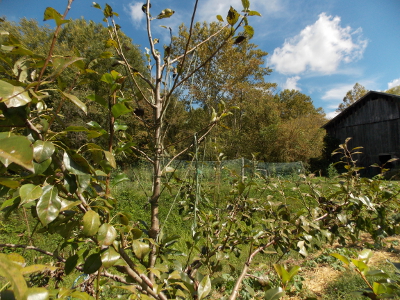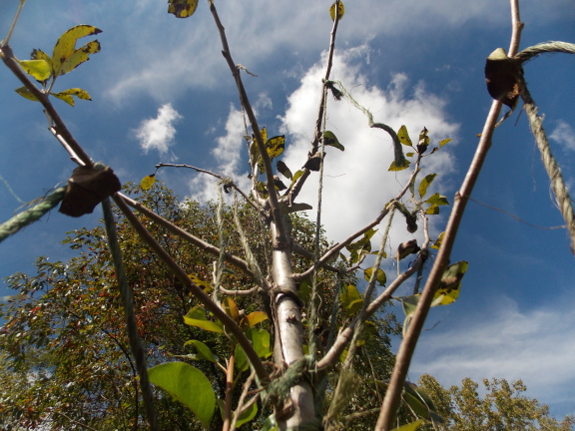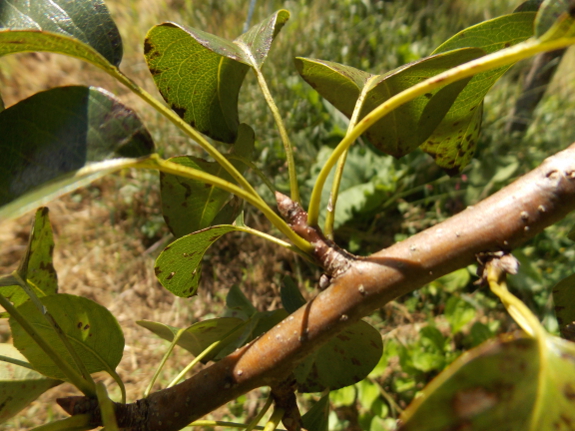
Pears as low-work fruit trees
 "Anna, I think you've been doing some experimenting with pears on your
homestead, but I couldn't find any recent updates in the archives. Any
luck with your disease-resistant rootstocks, etc.?"
"Anna, I think you've been doing some experimenting with pears on your
homestead, but I couldn't find any recent updates in the archives. Any
luck with your disease-resistant rootstocks, etc.?"--- Jake, whose excellent blog is currently one of my favorites. His writing will definitely be enjoyed by those who love a combination of useful facts, zany humor, and unadulterated geekiness.
Good question,
Jake! I haven't posted much about our pear trees because they're
mostly in the waiting stage at the moment. We originally planted a
Keiffer and an Orient pear
(the latter of which shouldn't be confused with Asian pears), and they
grew quite well...but produced fruits that weren't worth eating.
(Yes, we are snobs. Yes, if you plan to cook with the fruit, these
are probably still quite good varieties.)

So, a year and a half ago, I topworked
the young trees to change them over to new varieties --- Seckel,
Comice, and an unknown variety that is supposed to be similar to
Comice. The two named varieties are reputed to be moderately
susceptible to fireblight, and I have
seen a small amount of damage from that bacteria, although not enough
to really slow down the trees. (The photo above shows the huge
number of new branches the Seckel's central leader has produced during
this growing season alone.) Otherwise, the transformed trees seem
to be immune to problems. Like most pears, our trees grow a mile a
minute and I'm kept busy ripping off watersprouts to ensure that the
pears don't revert back to their original varieties, then training
keeper branches closer to the horizontal so they don't all grow straight
for the sky.

If all goes well, we
should see several fruits on each tree next year, at which point I'll be
able to tell you whether Seckel and Comice live up to their potential
for producing delicious pears that are much less prone to diseases than
apples are. So far, except for the fireblight, our pear trees have
been pristine. Of course, there are apple varieties that are nearly as disease resistant, and we manage to grow several despite having cedar-apple rust coming in from all sides --- a focus on types that are able to fight off that particular fungus is a big help.
But, from a management standpoint, I'd say that pears have definitely
been our easiest fruit tree, followed by apples, and then trailed
further behind by peaches. Of course, the peaches do shine in terms of producing soonest after planting, so it's all a tradeoff. But, yes, plant those pears!
Want more in-depth information? Browse through our books.
Or explore more posts by date or by subject.
About us: Anna Hess and Mark Hamilton spent over a decade living self-sufficiently in the mountains of Virginia before moving north to start over from scratch in the foothills of Ohio. They've experimented with permaculture, no-till gardening, trailersteading, home-based microbusinesses and much more, writing about their adventures in both blogs and books.
Want to be notified when new comments are posted on this page? Click on the RSS button after you add a comment to subscribe to the comment feed, or simply check the box beside "email replies to me" while writing your comment.

Thanks for the update on the pears! I hope you get some good fruit from them next year!
Thanks also for your kind words about my blog!